▶ Commentary
▶ By K. W. Lee
The immigrant first-generations Hahn-Pulli has metamorphosed into this mantra for the second generation: SAT, Harvard and six-digit-figure salaries with a Benz-Mercedes.
Market culture, along with New Economy-fueled materialism, is running amok among Korean Americas youth today.
Perish the thought that the struggling and stumbling immigrants in the seething inner cities of America remain fragmented, underrepresented, exploitable and vulnerable as ever, utterly unprepared for the fire next time.
LA Koreatown is in perpetual denial. The last fire never did happen.
No matter. In the name of sanity and dignity, I summon the ghosts of the forgotten past in desperate search for some authentic role models for our lost generation.
Back to the future: Out of the ashes and nightmare of Sa-ee-gu loomed two young heroic figures. One is dead, an 18-year-old college kid who came to the rescue of our mom-and-pop storekeepers under mob assault. Eddie Lee didnt have to die.
He and companion James Kang were cut down in a hail of crossfire between two groups of barricaded armed defenders, mistaken for looters. He lay mortally wounded. His fellow countrymen passing by just gawked at them and left Eddie bleeding to death. Miraculously, James survived.
Eddies supreme sacrifice to defend the helpless fellow countrymen under siege puts to shame the American-educated elites (except a splendid few) who had stayed aloof during the darkest hours of Korean American history.
In retrospect, Eddie the humble hometown boy has ascended to the lone redeeming symobl of Sa-ee-gua martyr. Eight years later, however, few know his name or care to know.
Don?t cry for Eddie Lee, Korean American. Hes in the Big Sky watching over us. Cry for our own selfishness, divisiveness, and shamelessness.
The other is alive and doggedly following in the footsteps of Eddie, as a bridge builder and aspiring civil rights lawyer in defense of the unheard, unseen and underrepresented in bleak inner-city LA.
Nearly a decade ago I first ran into Do Kim, then a freshman at Harvard, as my host when I was invited to address the first Korean American Student Conference (KASCON) he helped organize there.
And he was the second Korean I had met who spoke with a distinct ghetto African American dialect. The first one was former San Quentin death row inmate Chol Soo Lee whose childhood and adolescent years were mostly spent in juvenile halls and prisons. Both grew up in the mean streets.
Into his second year at UCLA Law School, during the summer break, Do Kim is clerking at NAACP Legal Defense and Educational Fund (LDF) engaged in active litigation on racial discrimination cases.
Such as a pending suit against the UC Regents challenging bias policies and practices affecting blacks, Latinos and Filipinos; monitoring and enforcing the consent decree that LDF secured to improve and expand bus services to transit-dependent riders, mostly people of color, the working poor, the elderly and the immigrants; and working on a lawsuit involving the LAPDs Rafael Perez Rampart Division scandal.
At age 3, Do and one-year-old brother Dae found home in a tiny Kingsley Drive apartment room with omma and abba in the heart of K-town. Abba worked on fixing beatup cars 16-20 hours at a time.
The only time he could hang out with his parents was on the weekends when he followed them to swap meets and flea merkets to help them sell pottery.
Often hungry for food when abba was jobless, he walked to Ardmore Recreation Center on Saturdays to wait in line for a free meal.
We didnt have much, but omma and abba made sure I grew up with good values, Do would recall.
When the boy stepped outside his $100-a-month home, he walked into a world of gang shootouts, suicides, drug overdose and too many dead spirits. The man-child grew up quickly.
At Harvard, he took up black studies as his major. He had witnessed mutual ignorance and hatred between blacks and Koreans. He wanted to be a bridge builder. He dreamed of returning home to K-town to do something.
And for the past 18 years, watching his father work at a hamburger stand in South Central, serving mostly black and Latino customers further bolstered his ambition to become a bridge builder.
While working his way through college, he served with African American civil rights groups, youth service and prison programs in the black ghettos.
A year before Sa-ee-gu, he returned to K-town to a summer of fire bombings, boycotts and senseless killings to act as a mediator with the Black-Korean Alliance. Going through the madness, Do was never more certain he would lead a life of peacemaker.
On April 29, 1992, he sat helpless in his Harvard dorm, his eyes glued to the TV set as Koreatown burned and choked. I listened to my burning soul as it told me to return home and DO SOMETHING.
Do did something. The next year Do founded the Korean American Youth Leadership Program (KAYLP) at KYCC to develop and train the next generation of homegrown leaders. More than 200 youngsters went through the rites of passage for leadership roles.
In the second year at KYCC, Do, along with six former and current gang members, started the Gang Awareness Project, probably the first training program involving Asian gangs in the country. His 45-minute video on Koreatown gang life has been widely recognized.
Do reached out to black and Latino activists to help bring both peace and productive activity to the Koreatown, Latino Pico-Union and black South Central areas. Its called the Multiethnic Youth Leadership Collaborative, a unique working model for interethnic teamwork in Los Angeles County.
Not surprisingly, Do this year won a $40,000 grant for two years at law school for the coveted Paul & Daisy Soros Fellowships for New Americans. He was one of 30 finalists out of a pool of 800 applicants, from 137 national origins.
As random violence against Asian Americans escalates along with rising anti-immigrant sentiment, Korean American is dizzily back on the Hahn-Pulli (material success at any cost) track, and the dark legacy of Neo-Confucianism has raised its ugly head among a new breed of neo-mandarins with high-tech trappings of old world elitism, title and prestige.
In Californias Southland alone, Korean American lawyers number more than 1,000 and still counting. Yet to my knowledge few of them are devoting their careers in the thankless civil rights/community advocacy fields.
I make this observation more in sorrow than anger. Unsung heroes like Do Kim are so rare among our Best and Brighest that they have become, for all practical purposes, endangered species. Do Kim belongs to that luminous few who can make the difference in the lives and limbs of those afflicted and left-out in the other Asian America.
These endangered speices among us deserve our admiration and sustained support in their respective endeavors. Given the experience and insight Do Kim has gained from his stint with NAACP, the time has come for us to rally around Do and other activists on the trenches to help launch a similar civil rights organization for the vulnerable immigrant community.
And that surely will be a fitting tribute to the undying memory of Eddie Lee who gave his young life to a larger cause called community conscience.
A Pioner Asian American journalist and the former editor of the Korea Times English Section, K.W. Lee has been invited again to lecture a course
on Investigative Journalism
Communities of Color:
Exploring Californias Pacific Rim Mosaic? at UCLA this fall.
스마터리빙
more [ 건강]
[ 건강]이제 혈관 건강도 챙기자!
[현대해운]우리 눈에 보이지 않기 때문에 혈관 건강을 챙기는 것은 결코 쉽지 않은데요. 여러분은 혈관 건강을 유지하기 위해 어떤 노력을 하시나요?
 [ 건강]
[ 건강]내 몸이 건강해지는 과일궁합
 [ 라이프]
[ 라이프]벌레야 물럿거라! 천연 해충제 만들기
 [ 건강]
[ 건강]혈압 낮추는데 좋은 식품
[현대해운]혈관 건강은 주로 노화가 진행되면서 지켜야 할 문제라고 인식되어 왔습니다. 최근 생활 패턴과 식생활의 변화로 혈관의 노화 진행이 빨라지고
사람·사람들
more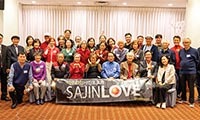
“취미생활로 다진 친목… 선후배들과 만든 모교사랑”
사진러브한인 사진 동호회 사진러브(회장 크리스 고)는 13일 용수산에서 송년모임을 갖고 한 해를 마무리하는 뜻깊은 시간을 가졌다. 이날 모임에…
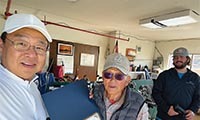
[홀인원] 이상원 박사
일반외과 전문의 이상원(왼쪽) 박사가 지난 9일 뉴포트비치 소재 골프장 9번 홀(152야드)에서 레스큐 클럽으로 친 샷이 그대로 홀에 빨려 들…
[송년행사 게시판] 재미시인협회
재미시인협회(회장 지성심)는 오는 20일 오후 4시 가든스윗호텔에서 한 해를 마무리하며 동인지 ‘외지’ 제35집 출판 기념회와 ‘제23회 재미…
[송년행사 게시판] 향군단체 연합
6.25 참전유공자회와 대한민국 육군협회 등 남가주 지역 향군 단체 연합은 19일 오전 11시30분, 용궁에서 송년 행사를 개최한다. 드레스코…
[송년행사 화보] “이웃과 함께 나누고 지인과 함…
KYCC13일 윌튼 플레이스 초등학교에서 열린 ‘한인타운청소년회관(KYCC) 홀리데이 카니발’이 성황리에 막을 내렸다. 올해는 KYCC 창립 …
많이 본 기사
- ‘反트럼프’ 공화 큰손, 작년 대선에만 약 5억4천800만달러 썼다
- 아마존, 키보드입력 데이터 분석해 위장취업 北노동자 적발
- ‘공천개입’ 이준석 첫 특검 출석… “尹과 공범엮기 무리한 시도”
- 청와대 내년부터 본격화…여민관 ‘정책허브’로
- ‘중독유발 비판’ 챗GPT, 아동보호 기능 이어 ‘친절함 정도’ 도입
- “산타 지금 어디쯤?”…한국서도 70년 전통 전화 안내 즐긴다
- 엡스타인파일 공개 후폭풍…법무부 ‘트럼프 삭제’ 의혹 선긋기
- 머스크 재산… 사상 초유 7천억달러 돌파
- 신민아♥김우빈, 결혼식날 전한 깜짝 소식..3억 기부한 예비 부부
- ‘열애설→결별설 겪은’ 제니·지드래곤, 단둘이 ‘MMA’ 대상 쓸어갔다
- ‘새댁’ 함은정, 결혼식 하자마자..내조의 여왕
- 신민아♥김우빈, 결혼식 날 웨딩 사진 첫 공개..눈부신 투샷
- [건강포커스] “밤에 더 자주 깨는 어르신, 다음 날 인지수행 능력 떨어져”
- ‘SNS검증’ 美비자심사 지연에…빅테크, 또 직원 출국자제 권고
- 美, 베네수 연안서 유조선 추가 나포…긴장 또 고조될 듯
- ‘손예진♥’ 현빈, 학부모 모드ON.. “아들이 배우 한다면? 하..” 한숨
- 美, 우크라戰 종전 중재 속도…마이애미서 우크라·러 연쇄회동
- ‘부상 아웃 공식 확정’ 이강인, 절뚝일 때부터 이상했다 “왼쪽 허벅지 근육 이상”... 폼 최고였는데 아쉬워
- 美·이집트 등 4개국, 가자 평화구상 진전·후속조치 논의
- 안세영, ‘천적’ 야마구치도 넘었다…역대 최다승까지 단 한 걸음
- 尹 김건희특검 첫 조사 8시간 반 만에 종료…6개 혐의 모두 부인
- 트럼프, ‘바이든 임명’ 직업 외교관 출신 대사들 대거 소환
- ‘미소천사’ 김아랑, 너무도 진솔했던 ‘은퇴 이유’ 고백 “경기 후 아쉬움 아닌 고마움 들어 결심했다”
- 위성락 “내년부터 농축·재처리·핵잠 한미협의 동시다발 진행”
- ‘이젠 SD 송성문’ 3루엔 ‘3억 5000만 달러’ 마차도 버티는데... 단장이 답했다 “다양한 역할 소화할 것”
- 개명 하루만에 케네디센터 외벽에 ‘트… 1
- 쿠팡 주주, 美법원에 집단소송… “정… 1
- ‘유세방불’ 트럼프 “관세가 물가 올… 1
- 교황, 전세계 추기경 바티칸 소집…내달 7∼8일 첫 회의
- 시민권 박탈 착수⋯매달 200명 1
- 젤렌스키 “우크라 선거 방식, 푸틴이… 1
- “네타냐후, 트럼프 만나 ‘이란 추가 타격’ 설명 계획”
- 요르단 “美 시리아 IS 공습에 참여…안보 위협 저지”
- “스페이스X, 상장 주관사 선정 착수…모건스탠리 유력”
- 30년 만에 ‘금리 0.5%’ 허문 일본
- “불공정 행위 걸리면 망하게 대기업 과징금 세게 때려야”
- 최화경 화가 개인 작품전시회
- 뉴욕-뉴저지 다리· 터널 통행료 또 오른다
- 구글, 검색결과 크롤링 업체 상대 소송…AI 경쟁사 견제 의도
- “박나래, 주사 이모 약에 내성 생겨..약 떨어지면 연락하라고”
- 위기의 트럼프 “내년봄 최대규모 세금환급”
- 뉴욕주 차량운전자 벌점 규정 대폭 강화
- 해군, 트럼프 ‘황금함대’ 새 전함 … 1
- “AI 보안으로 클라우드 시장 잡자”…구글, 100억 달러 보안 파트너십
- “개인 부동산 취득, 법카 사적 유용” 박수홍 친형 구속 이유 보니
- [업계] 12월 내내 크리스마스 특별 메뉴 출시
- 尹 소환한 김건희특검, ‘명태균 의혹’부터 6가지 혐의 순차 추궁
- 이 대통령 “피도 눈물도 없는 금융사… 1
- 뉴욕크로마하프연주단, 하크네시야교회서 정기연주회
- 대법 예규 후속절차, 22일 ‘형사부 증설’ 판사회의… 서울고법 ‘내란 전담재판부’ 설치 돌입
1/5지식톡

-
 ☝️해외에서도 가능한 한국어 선생님…
0
☝️해외에서도 가능한 한국어 선생님…
0이 영상 하나면 충분합니다!♥️상담신청문의♥️☝️ 문의 폭주로 '선착순 상담'만 진행합니다.☎️ : 02-6213-9094✨카카오톡ID : @GOODEDU77 (@골뱅이 꼭 붙여주셔야합니다…
-
 테슬라 자동차 시트커버 장착
0
테슬라 자동차 시트커버 장착
0테슬라 시트커버, 사놓고 아직 못 씌우셨죠?장착이 생각보다 쉽지 않습니다.20년 경력 전문가에게 맡기세요 — 깔끔하고 딱 맞게 장착해드립니다!장착비용:앞좌석: $40뒷좌석: $60앞·뒷좌석 …
-
 식당용 부탄가스
0
식당용 부탄가스
0식당용 부탄가스 홀세일 합니다 로스앤젤레스 다운타운 픽업 가능 안녕 하세요?강아지 & 고양이 모든 애완동물 / 반려동물 식품 & 모든 애완동물/반려동물 관련 제품들 전문적으로 홀세일/취급하는 회사 입니다 100% …
-
 ACSL 국제 컴퓨터 과학 대회, …
0
ACSL 국제 컴퓨터 과학 대회, …
0웹사이트 : www.eduspot.co.kr 카카오톡 상담하기 : https://pf.kakao.com/_BEQWxb블로그 : https://blog.naver.com/eduspotmain안녕하세요, 에듀스팟입니다…
-
 바디프렌드 안마의자 창고 리퍼브 세…
0
바디프렌드 안마의자 창고 리퍼브 세…
0거의 새제품급 리퍼브 안마의자 대방출 한다고 합니다!8월 23일(토)…24일(일) 단 이틀!특가 판매가Famille: $500 ~ $1,000Falcon: $1,500 ~ $2,500픽업 & 배송직접 픽업 가능LA…
케이타운 1번가
오피니언
 한영일 / 서울경제 논설위원
한영일 / 서울경제 논설위원[만화경] 웰다잉 인센티브
 캐슬린 파커 워싱턴포스트 칼럼니스트
캐슬린 파커 워싱턴포스트 칼럼니스트 [캐슬린 파커 칼럼] 아이들을 온라인에서 보호하기
 양상훈 수필가ㆍ시인
양상훈 수필가ㆍ시인 [한국춘추] 경제대공황ㆍ제2차 세계대전 승리로 극복한 루스벨트 리더쉽

[왈가 왈부] 고환율에 외환 건전성 완화·서학개미 규제… 미봉책 아닌가요
 수잔 최 한미가정상담소 이사장 가정법 전문 변호사
수잔 최 한미가정상담소 이사장 가정법 전문 변호사 [수잔 최 변호사의 LIFE &] AI 시대 편리함에 안주하지 말자
 김도년 성균관대 건축학과 교수 스마트도시·건축학회장
김도년 성균관대 건축학과 교수 스마트도시·건축학회장 [로터리] 지멘스가 만드는 미래 동네
1/3지사별 뉴스

퀸즈장로교회 ‘사랑의 바구니’130개 이웃에 전달
퀸즈장로교회가 18일 크리스마스를 앞두고 교인들의 정성과 사랑이 듬뿍 담긴 ‘사랑의 바구니’ 130개를 소방서와 경찰서, 요양원, 선교회, 그…
시민권 박탈 착수⋯매달 200명

“이웃 돌보는 여러분이 동역자”
워싱턴성광교회(담임목사 임용우)는 18일 한인단체와 소방서‧도서관 등에 총 2만9천 달러의 성금을 전달했다. 지난 2011년부터 15년째 지역…
소기업 지원에 1천만 달러 투자

위기의 트럼프 “내년봄 최대규모 세금환급”
트럼프 대통령은 17일 “취임 1년 만에 우리는 누구도 상상하지 못한 성과를 이뤄냈다”고 말했다.트럼프 대통령은 동부시간 이날 밤 9시부터 백…
[새해부터 이렇게 달라진다] 최저임금 또 오르고… 유급 병가는 더 확대

오늘 하루 이 창 열지 않음 닫기 




























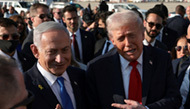







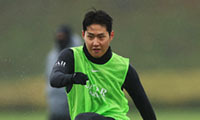
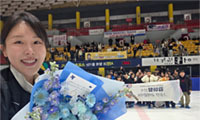














.png)


댓글 안에 당신의 성숙함도 담아 주세요.
'오늘의 한마디'는 기사에 대하여 자신의 생각을 말하고 남의 생각을 들으며 서로 다양한 의견을 나누는 공간입니다. 그러나 간혹 불건전한 내용을 올리시는 분들이 계셔서 건전한 인터넷문화 정착을 위해 아래와 같은 운영원칙을 적용합니다.
자체 모니터링을 통해 아래에 해당하는 내용이 포함된 댓글이 발견되면 예고없이 삭제 조치를 하겠습니다.
불건전한 댓글을 올리거나, 이름에 비속어 및 상대방의 불쾌감을 주는 단어를 사용, 유명인 또는 특정 일반인을 사칭하는 경우 이용에 대한 차단 제재를 받을 수 있습니다. 차단될 경우, 일주일간 댓글을 달수 없게 됩니다.
명예훼손, 개인정보 유출, 욕설 등 법률에 위반되는 댓글은 관계 법령에 의거 민형사상 처벌을 받을 수 있으니 이용에 주의를 부탁드립니다.
Close
x